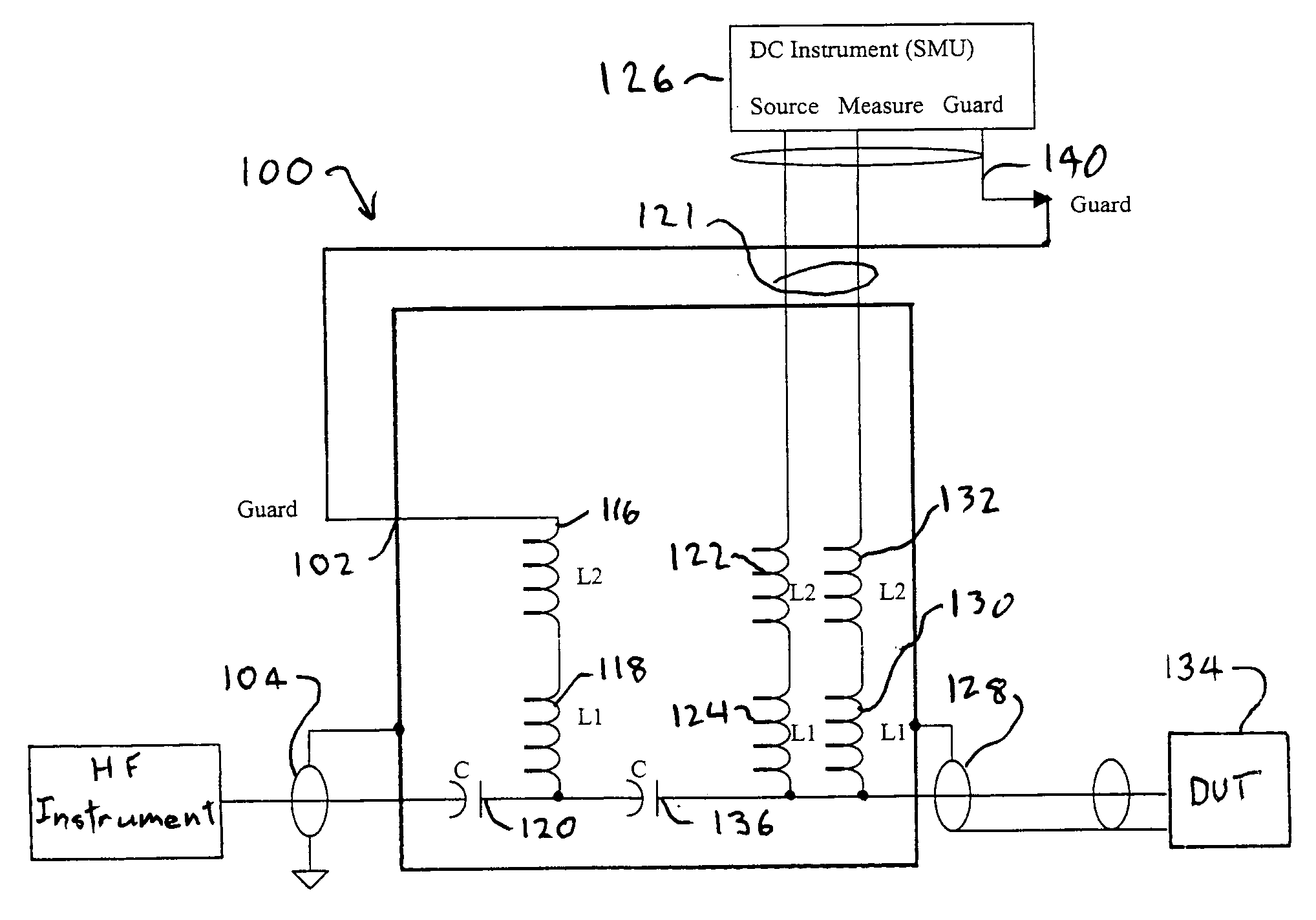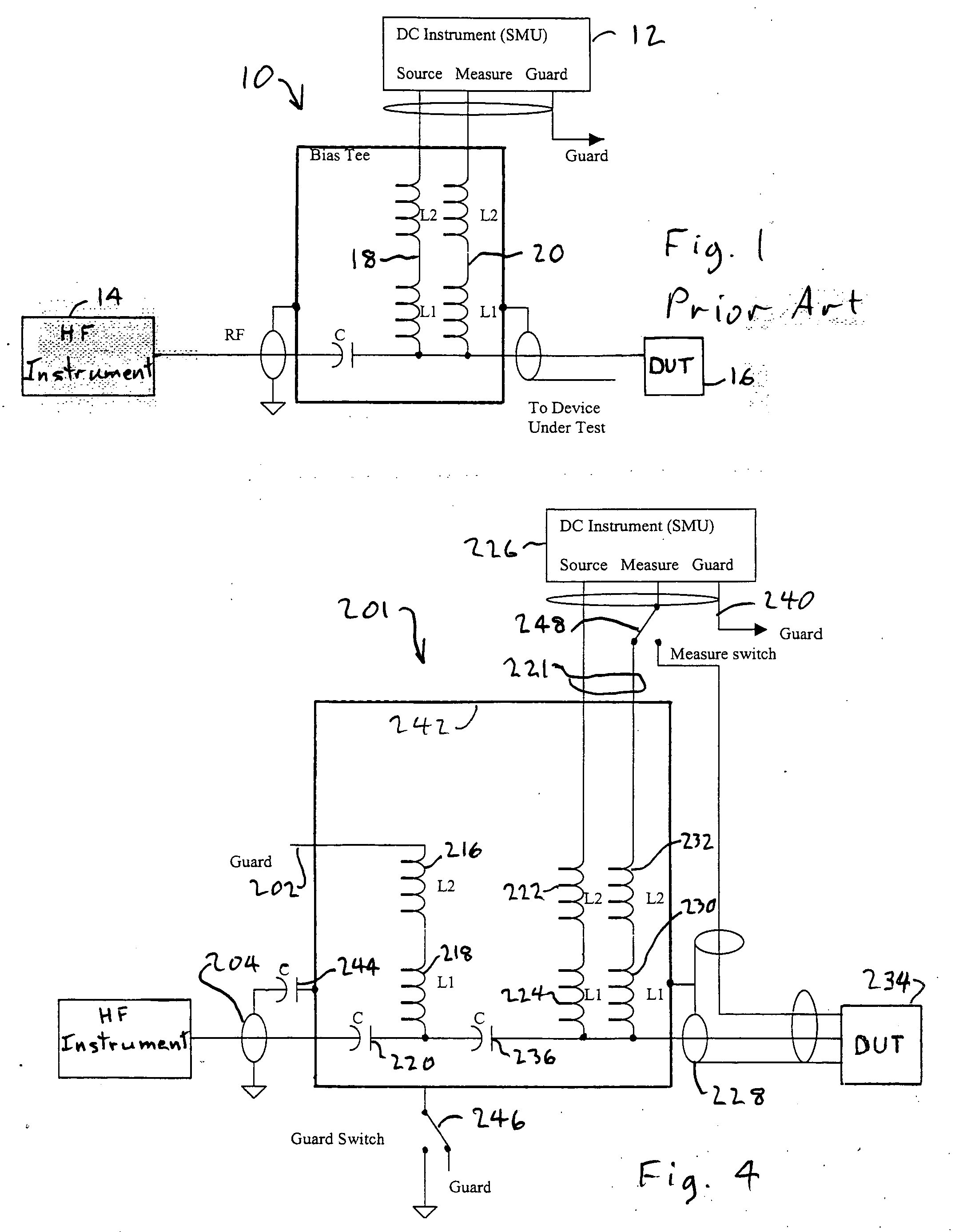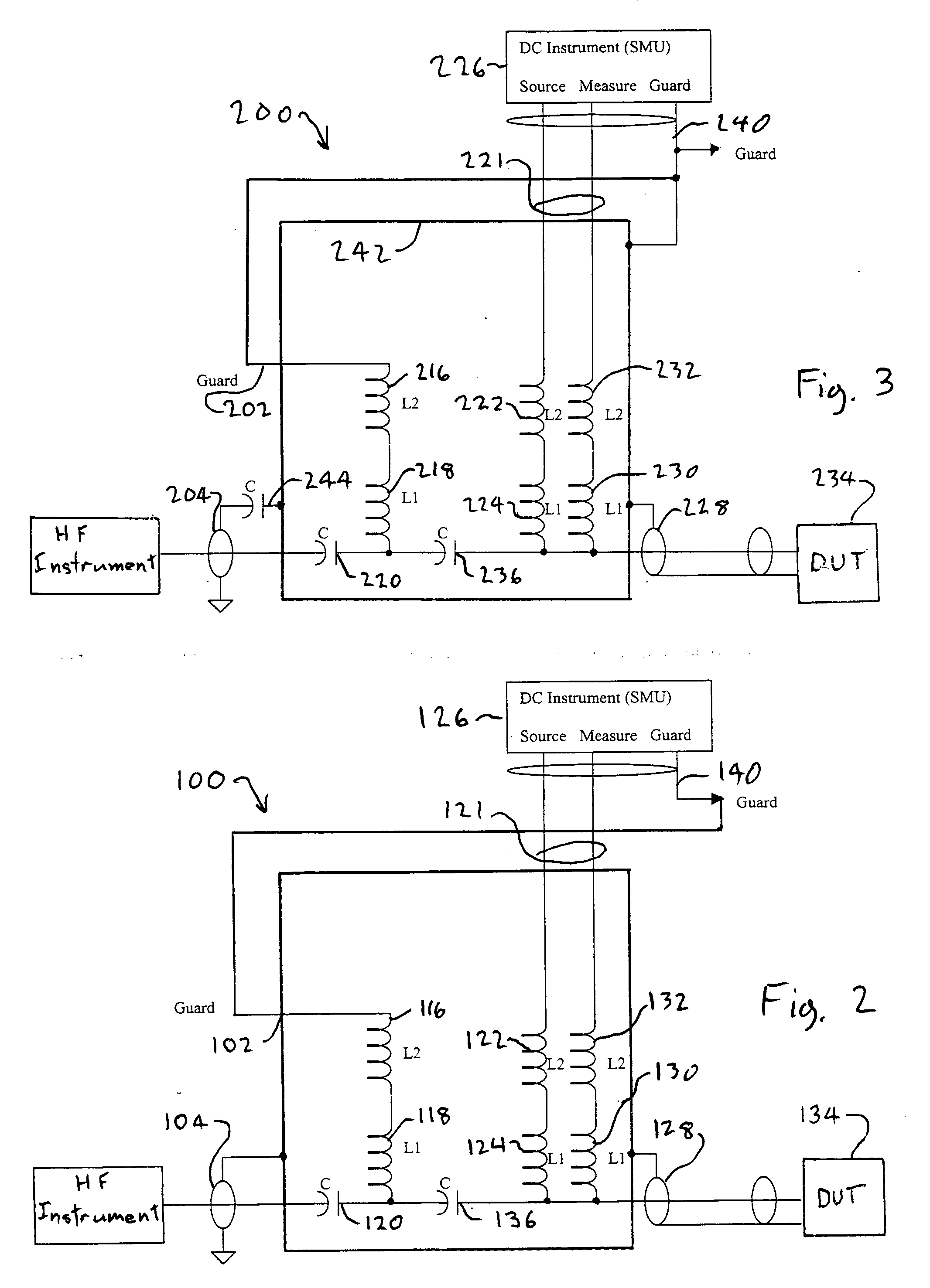Measurement bias tee
a bias tee and measurement technology, applied in the field of bias tees, can solve the problems of introducing its own measurement errors, challenging the accuracy of and/or sensitive measurement,
- Summary
- Abstract
- Description
- Claims
- Application Information
AI Technical Summary
Benefits of technology
Problems solved by technology
Method used
Image
Examples
Embodiment Construction
[0011] Referring to the example of FIG. 2, a bias tee 100 includes a guard input 102. The guard input 102 is connected to the HF port 104 of the bias tee 100 by an impedance network formed from the inductors 116, 118 and the capacitor 120. The DC instrument 126 is connected to the DC port 121 of the bias tee 100. The inductors 122, 124 connect the source output of the DC instrument 126 to the output port 128 of the bias tee 100. The inductors 130, 132 connect the measure input of the instrument 126 to the output port 128.
[0012] In operation, the output port 128 applies both DC and HF to the DUT 134. The capacitor 136 allows HF to travel to the port 128 and the inductors 122, 124, 130, 132 block HF from the instrument 126.
[0013] The capacitor 120 blocks DC from the guard input 102 from entering the instrument 126 and the inductors 116, 118 block HF from the guard input 102.
[0014] The guard output 140 of the DC instrument 126 is typically driven at a voltage equal to the forcing vo...
PUM
 Login to View More
Login to View More Abstract
Description
Claims
Application Information
 Login to View More
Login to View More - R&D
- Intellectual Property
- Life Sciences
- Materials
- Tech Scout
- Unparalleled Data Quality
- Higher Quality Content
- 60% Fewer Hallucinations
Browse by: Latest US Patents, China's latest patents, Technical Efficacy Thesaurus, Application Domain, Technology Topic, Popular Technical Reports.
© 2025 PatSnap. All rights reserved.Legal|Privacy policy|Modern Slavery Act Transparency Statement|Sitemap|About US| Contact US: help@patsnap.com



